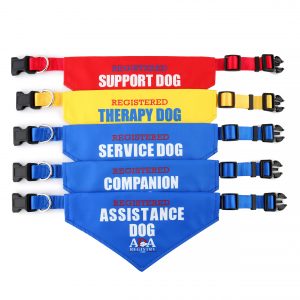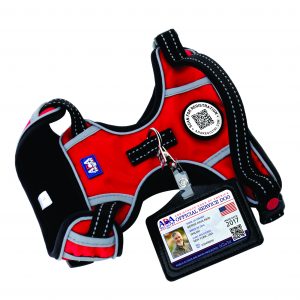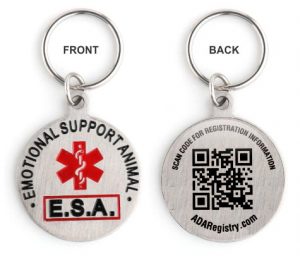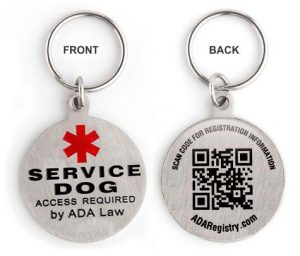MARION, Va. — This retiring Marion Police Department officer has 120 arrests under his collar and was recognized last week for the lifesaving work of his career. While he may be slowing down now, retirement didn’t stop K-9 Cooper from continuing to serve as an MPD ambassador during his recognition.
Bosey at home with fresh cut.
Bosey at home with a fresh winter cut. She love to sit pretty once she is blown out. She is the most amazing girl ever. ???
Tink’s picture
A picture of Tink that I took. If she is not curled up next to me, she picks her head up to check on me everytime I move from where I am sitting or laying.
Leo. Grey pitbull with white belly and paws. Also has a shorter tail due to injury at birth.
Leo is the biggest love bug I have ever met. We have grown so attached to eat other since I got him. He has became my best friend. We go every where together. Follows me every where around the house. He knows exactly what to do to calm me down during panic attacks or when my mood changes drastically. He will come sit by me and put his head in my lap because he knows me petting him calms me down. He also tries to distract me and he will bring a toy over so we can play and get out of the mood. He really is the best dog I have ever had.
Happiness Personified?❗️
Izzy gets very thirsty after running after her balls. I always bring a plastic bowl and some fresh water for her.
Freshly groomed and as white as snow??❗️
Izzy looks clean and white for about two days after being groomed. We always forget how Snow White she is in between groomings?❗️
Freshly groomed and as white as snow??❗️
Izzy looks clean and white for about two days after being groomed. We always forget how Snow White she is in between groomings?❗️
Service Dog Joins Team
While saving lives, paramedics and EMTs often find themselves providing emotional support to people on their worst days. So when the job is done and they’ve returned to their stations, they may need some comfort as well.
Enter Indie: a smart and cuddly St. Bernard who recently joined East Baton Rouge Emergency Medical Services to provide relief for paramedics in distress after hard calls. She is a nationally registered ADA service dog and PTSD dog, her handler said.
“A lot of times we don’t want anybody to see our weaknesses because we’ve got to remain strong,” said Leah Constantino, one of Indie’s handlers. “With her, you can just be sad, and she’s gonna try to make you feel better.”
Constantino began ruminating on the need for an EMS emotional support dog after the tumultuous year of 2016, which saw the police shooting of Alton Sterling, widespread civil unrest in response, a deadly police ambush and a rare flood event that crippled the city.
Paramedics were at the forefront of each disaster, and some were badly traumatized by the experiences.
Constantino, who has been with EMS for 26 years, said paramedics are accustomed to putting their mental health on the back burner because they have to focus on their jobs. Not coping can manifest in a number of ways, such as developing depression and anxiety.
“It’s time that we take care of ourselves so we can take better care of other people,” she said.
Indie began on a trial basis in early summer for a little more than a month.
“The stars aligned, I don’t know,” Constantino said. “The difference was remarkable in a couple of days.”
She is now a uniformed officer with EMS. Her call number is Indie 500.
Constantino said Indie takes the emotions paramedics have pushed aside or tamped down and allows them to process.
“We will compartmentalize our emotions on tragic events and do what we’re trained to do, do what’s necessary, and generally it hits us after the call,” she said.
Indie, who Constantino characterizes as smart and caring, will “almost immediately” approach the person who seems to be in the most distress after a bad call. She follows orders quickly, listening to her handlers with rapt attention and focus. Average training for a dog like Indie takes a year, Constantino said.
Ready to respond to paramedics who need comfort during debriefing sessions, Indie lives at EMS headquarters. She has set hours where she needs exercise and sleep, although these are adjusted when she is needed to step in for a paramedic in need — as long as those lost hours are made up later. Her wellbeing is critical, Constantino said.
Indie doesn’t go on calls, but she responds after calls. And she goes on social visits to other stations to boost paramedic morale.
After a recent traumatic call, Indie stepped up to help a paramedic struggling to process the night’s events.
It was late, and Indie was curled up on the floor. The paramedic joined her, lying down and closing her eyes beside the dog.
At some point, the paramedic grew emotional. As if sensing her sadness, Indie immediately picked her head up and rested it on the paramedic’s shoulder.
“She’s gonna love you,” Constantino said. “It’s unconditional love, non-judgmental love.”
My Hero saves the day!
Jaxx is amazing! He notifies me when something is burning, or smells gas! Jaxx comforts me and gets me out of medical trouble immedietally. He is emotional and attenative when I have an issue. He defends me and completely looks after me. I couldnt do it without him!
Service Dog Goes To School
When Remington Lewis rides the bus to Walton Middle School in DeFuniak Springs on Wednesday, he won’t be alone.
This time, next to the sixth-grader will be his best friend Willow, a 1-year-old German shepherd.
The Daily News ran an article in July about the Lewis family’s fundraiser to pay for Willow’s training as a service dog. Remington, who his family calls Remi, needs a service dog to help protect himself and others during outbursts.
Remi, now 11, was diagnosed with attention deficit hyperactivity disorder at age 5, and has been prescribed a long list of medications and diagnosed with a slew of other illnesses that cause behavioral issues. Among them are disruptive mood regulation disorder, bipolar disorder, depression and anxiety.
The GoFundMe campaign raised enough money — and then some — to certify Willow, said Remington’s mother, Rachel Lewis. Willow started training this summer and recently passed all of her certifications.
“He has been waiting for this day,” Lewis said of her son. “He’s been telling his friends. He calls her his baby girl. He says that his baby girl is gonna be with him. He’s just really happy that she’s going to be with him.”
Willow underwent service dog training with trainer Chase Shankle at Total Dog Training. Shankle really knows what he is doing, Lewis said. “The past three months we’ve been able to take her out in public everywhere we go — restaurants, football games — wherever we go,” Lewis said. “We’ve never had any issues. She’s more behaved than any of my children, so I don’t mind taking her.”
The training is extensive, Lewis said. While Willow knows basic commands, such as sit and stay, she now also knows more in-depth commands.
“She can place, which is a placemat we use,” Lewis said. “If I tell her to place, she will not get off that mat. She doesn’t jump up or try to engage with anybody. Somebody can look up and whistle at her, she’s not moving. We do have a pact that says, ‘Don’t touch,’ but that’s up to Remington.”
Willow also is training to block an exit if Remi tries to leave the room.
Remi and Willow have had a special connection from the beginning, Lewis explained in her first interview with the Daily News.
“From day one she slept in his room,” Lewis said. “She was supposed to be my dog, really. She’s always been more with Remington. He feeds and waters her. He always puts her outside. She sleeps with him or next to him. She’s never slept anywhere in the house except next to Remington.”
Their bond is still strong. Remi’s behavioral issues have been better lately; he has had only one major behavioral episode, Lewis said. He had to be sedated.
“When he woke up, he was asking for Willow,” Lewis said.
They had a first birthday party for Willow in October.
The school faculty has embraced the service dog and held an assembly to inform the other students.
“The assistant principal said, ‘Any time (Remi) is having a bad day, honestly all I have to do is start talking about Willow and he opens right up and then we’ll get talking about what happened to make him upset and it’s just a lot easier,’” Lewis said. “When we bring her up is when he starts talking.”
Lewis said she wants to thank the people who contributed to the fundraiser.
“Even when I stated we had enough money, people just kept donating,” she said. “So we do have extra funds available if we need anything for Remington and her. For school, I had to get her another kennel, placemat and vest. We’re extremely grateful. I can’t say that enough, really.”
K-9 Officer Retires
Last week, the Marion Town Council honored the MPD’s first K-9 officer, an 8-year-old yellow lab, who came to the department as a gift from the Virginia Department of Corrections. Cooper has won numerous hearts as he’s performed demonstrations for schools, churches and other organizations.
According to MPD Chief John Clair, Cooper “provided emotional support for children in our community during their most difficult times. Cooper interacted with children countless times and helped our department to provide a more positive interaction with the youngest of our community, in addition to his record of fighting crime.”
In July, when Cooper’s impending retirement was announced, Clair said Cooper was the MPD’s “most popular officer bar none.”
He lived up to that reputation last week, winning head scratches from council members and giving dog kisses on occasion.
Cooper is now taking life easy at the home of his partner-handler, Sgt. Jeff Horn.
It was fitting for the council to honor Cooper’s service at a December meeting. He was first introduced to the governing body in December 2016 when he broke new ground for the law enforcement agency when the about 80-pound lab and Horn became the MPD’s first full-time K-9 team.
Last week, Horn remembered how challenging the initial training was with Cooper. With a hint of sadness in his voice, the sergeant noted that many K-9 teams achieve their best working relationship just as the dog is ready to retire. Work as a service dog is demanding, and Cooper has developed hip dysplasia. Running his hand down Cooper’s spine Monday evening, Horn said the condition causes Cooper pain.
“He’s a great dog, but we all get to the point where we’re better meant for a slower pace,” said Horn last summer. “As much as I’ll miss having him at work, I’ll look forward to seeing him at home at the end of my shift.” At home, Cooper enjoys canine companions.
Horn told the gathering, “Cooper is successful because of the officers he’s surrounded by.”
Cooper is not aggressive. He passively signaled Horn when he scented an illegal substance. In his first seven months on the job, he’d detected hydrocodone, marijuana, meth, mushrooms, and oxycotin among others drugs.
A Helping Paw
A Girl Scout project that calls for making a lasting improvement to the community has generated a young local author and an educational children’s book that she hopes will pass on some of what she has learned.
Catherine Bezio, a high school senior who lives in Erving, has been training service dogs since she was in eighth grade. She has volunteered for the local organization Heroes, Horses and Hounds, and J.M. Animal Training and Rescue, which both train rescue dogs to become service dogs.
Bezio has trained several dogs since then. Some of the dogs she has trained now work with people with unique needs, including a veteran with PTSD. Another dog, which liked people too much to ever work as a service dog, was adopted by Bezio.
At the beginning of 2020, Bezio was up for her Gold Award — the highest award in Girl Scouts. Thinking of a concept for a project, she naturally gravitated toward her work with dogs. For her Silver Award, she had documented her training of a dog.
But the Gold Award has different requirements than the Silver Award: it emphasizes finding a lasting way to address some shortcoming or need in your community, Bezio said.
While training dogs, Bezio noticed that other people often don’t know how to respond to seeing a service dog. Many people may not know, for example, not to pet a service dog who is working.
“I have seen firsthand how little people know about them. People will come up and try to pet the dogs,” Bezio said. “They just don’t know how to respond to them.”
A book, she realized, could be the perfect way to tie the different pieces together. It would be a medium for sharing her knowledge; and, since a book can outlast its author, its impact might even continue into future generations.
Starting work on the book at the beginning of 2020, she envisioned it as an illustrated children’s book that would somehow incorporate elements of the local community.
The book, titled “Dogs — Lending a Helping Paw,” would cover service dogs, therapy dogs and comfort dogs, and explain the differences between each.
She had planned to write it in March. When the pandemic arrived, the book became a priority for her.
“I found myself with an abundance of free time. I could put a lot of effort into putting the book together,” she said.
For illustrations, she contacted local organizations like the ones she had volunteered for, requesting donations of photos. Using image editing software, she made the photos look like hand-drawn illustrations.
“I thought that would add a nice personalized touch to what the dogs do,” she said.
By midsummer, she had finished the book, including having the book reviewed for accuracy by her mentors in dog training.
She found a publishing arrangement to print individual copies of the book and sell them on Amazon. It is still available to buy.
She also bought about 15 copies of her own book and donated them to local elementary schools and libraries, including Erving Public Library and Ja’Duke preschool.
In the plan she had laid out at the beginning of the year, Bezio would have visited local elementary schools to present her book and talk about it with students. But because of the pandemic, those visits had to be canceled. Instead, she held a few virtual readings online and found other ways to publicize the book.
Now, Bezio is preparing a report of her project, which will be considered in determining whether she will be awarded the Gold Award.
Veterans Service Dogs
PHOENIX – Staff Sgt. Terry Stallings served in the Army for 23 years. He was stationed across the globe, including posts in Iraq, Balad, Kuwait, Desert Storm, Mexico, Central America, Alaska, Portugal and Germany.
After six combat deployments overseas, he returned home and was diagnosed with post- traumatic stress disorder.
Veterans often rely on medications, therapy, sports and other treatment options for PTSD relief. Stallings looked toward companionship.
“He’s basically my battle buddy,” Stallings said. “Wherever I go, he follows me. If I’m laying down, he lays down at the foot of our bed. If I’m in the living room, he lays down next to my chair. He’s always ready to help me.”
“Koda’s learned when I’m having nightmares, he’ll come up and he’ll comfort me,” Stallings said. “He’ll put his wet, cold nose on me at night when I’m sleeping and wake me up because he knows I’m having a bad dream or an episode or something like that.”
Stallings and his wife, Debbie, picked up two Anatolian brothers with the intention of eventually training one or both as service dogs.
“I thought it’d be nice to have one. We actually weren’t even sure what a service dog would do for us,” Stallings said, “but we decided to look around and do some research.”
“One thing we did notice was everywhere we looked and all the inquiries that we did, everything was leading us towards Soldier’s Best Friend as being the best (organization) out of all of them,” Stallings said.
Its staff is made up of war veterans, practicing PTSD therapists, professional service dog trainers, veterinarians and nonprofit professionals.
Whether a dog goes through the adoption process or is brought in by a veteran, the dog must know how to perform basic commands, All dogs are spayed, neutered and vaccinated, and have received all recommended preventative medications before placement.
Veterans who are paired with rescue dogs will not be charged for veterinary services and most supplies during the training process, the organization says, and veterans who own dogs will get veterinary services at a reduced rate during training.
The primary focus of Soldier’s Best Friend is to train the dogs to be service animals, but the program is equally as rigorous for the veterans. Because of their PTSD symptoms, everyday tasks such as going to a store or attending a crowded event can become nearly impossible for some.
Stallings said the training program changed his mind about repetitiveness and perseverance. Because of his military background, he liked to give a command and see it performed right away. He also was quick to get frustrated and react.
The nonprofit’s main goal is to train each dog to fit the veterans’ unique and specific needs.
“Every dog is a little bit different, and every veteran needs something different from their dog,” Walker said. “We do a lot of talking and deciding what tasks the veteran is going to teach the dog because the task work is so personal.”
“I’ve always worried about people being behind me where I can’t see,” Stallings said, “so I taught him to watch my back. He would sit on my right side and look behind me. He’ll actually nudge me, letting me know there are people behind me.”
Koda is there to lend a helping paw when Stallings needs help up.
“If I was sitting on the floor or sitting in a chair and I needed him,” Stallings said, “he’ll come to me and I’ll tell him to brace, and then he locks his front legs up. Between his shoulder blades, I can apply all my body weight on him and stand up basically like a cane.”
At the beginning of the program, however, Stallings was skeptical.
He could tell that Koda did not understand why he was training or going through such repetitive motions, but it didn’t take long to see a change in himself and his dog.
“All of a sudden, the light would kick on, and he’d understand,” Stallings said. “It’s kind of cool to see him get it. It’s almost like he’s smiling, he’s figured it out. ‘I know why I’m doing this.’”
“One day they come in, and they realize they are no longer just a pet,” Walker said.
But the veterans also go through a big change as well.
Blaze going for a walk in the snow with mum
- First snow walk
- Didn’t like to pee or poop in it lol
- Love taking selfies with mum
Mishka number 1
Sitting beside me keeping me company and cheering me up. Was having having anxiety attack and he came to my aid to calm me down.
Maze chocolate Labrador
Maze taking a break from service. Lazy day at home. I like my home and my duties. I’m very happy and smart. My owner taught me well.
Dexter my little chi
Recent photo, of Dexter. Was taken at Christmas 2020 in British Columbia. Ridiculous that I have to write 100 characters
Dexter my little chi
Recent photo, of Dexter. Was taken at Christmas 2020 in British Columbia. Ridiculous that I have to write 100 characters
Aggie Marie Theriault
This is Aggie she is my emotional support dog she is very smart and loves to go for walks ,she loves to sleep with her momma,and also enjoys car rides with her her dad.Her and dad play for hours she is a joy to our home,WE LOVE HER ♥️?
2021 New Year pictures
Basya is absolutely adorable dog and friend. She loves everyone. We adopted her 2 years ago from shelter. she was abandoned two times before come to our family. She loves music and singing when she hear violin or viola sound.
Two sisters are always together
Basya is absolutely adorable dog and friend. She loves everyone. We adopted her 2 years ago from shelter. she was abandoned two times before come to our family. She loves music and singing when she hear violin or viola sound.








